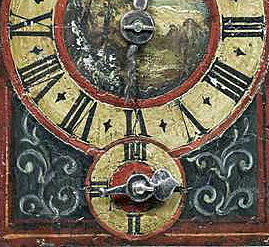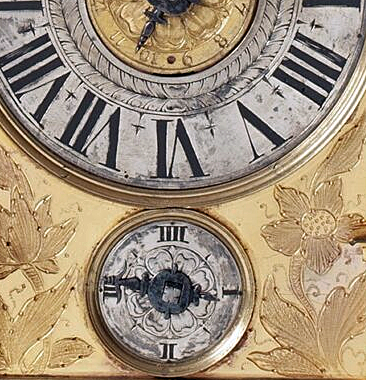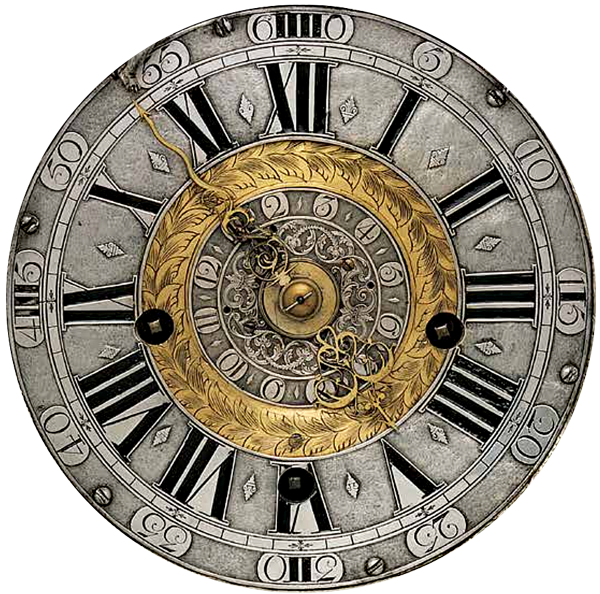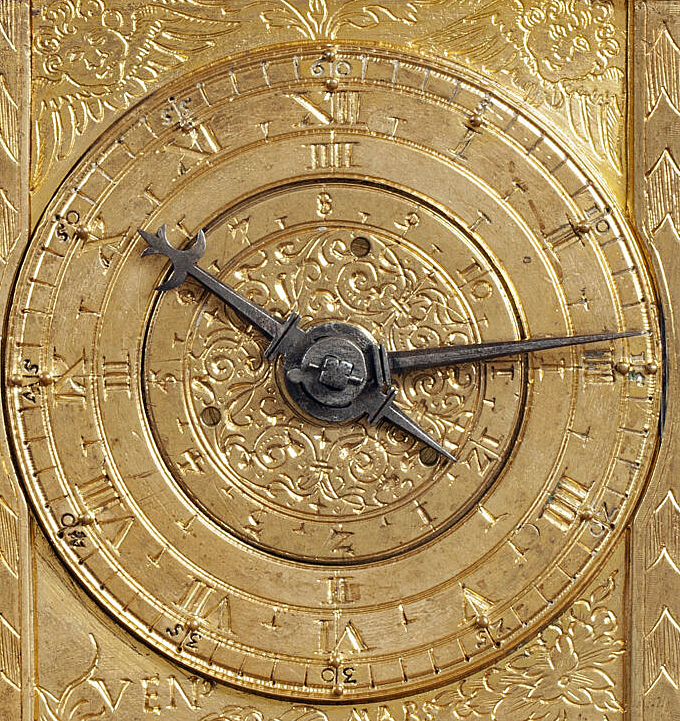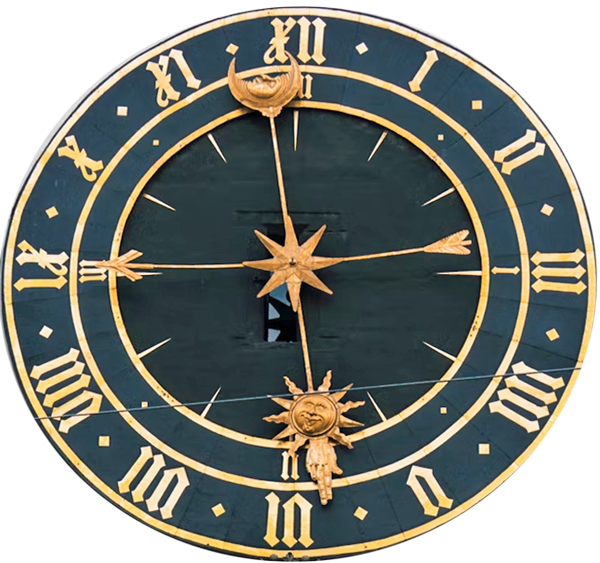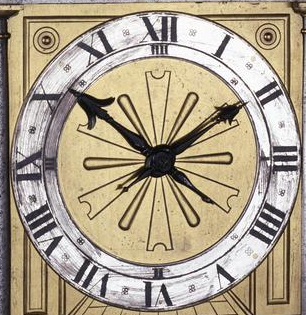|
Roman
Numerals
on
Clock Dials
Compiled by Fred Kats
|
 


Subtractive
notation of
Roman numerals,
like
IV, IX, XIV, XIX, XL
evolved over time from an ancient mostly additive system and
became more popular after the invention of the printing press.
Although its use was inconsistent in ancient times and during the
Middle Ages.
While Romans initially preferred simpler
additive
forms like IIII for four,
subtractive
forms such as IV were also used, especially in inscriptions.
After
the printing press's arrival, the more compact subtractive forms
like IV and XL gained wider use in Europe, leading to the more
standardized subtractive rules that are taught today. Although they were not universally applied even by the Romans themselves.
|
EARLY
DIALS AS AN INTRODUCTION

|
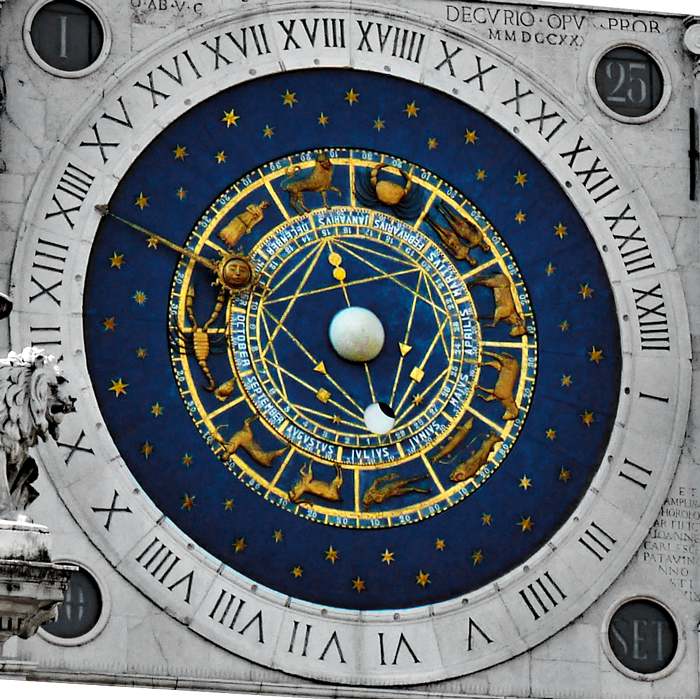
All
ancient
additive
numerals
|

1540 |
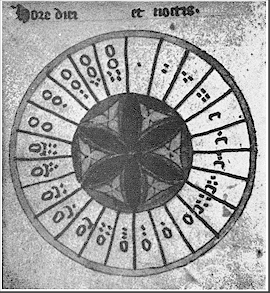
England ca.1370
|
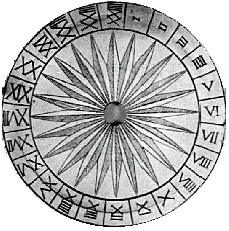
All additive except for
XIX.
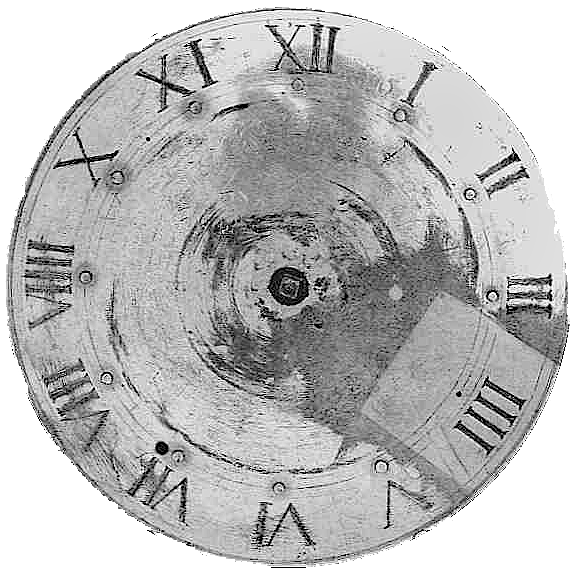
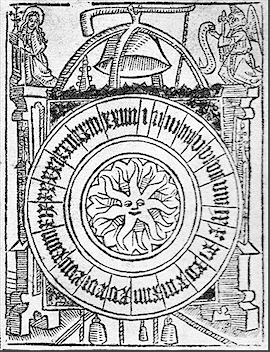
All
ancient except for
IX and
XIX.
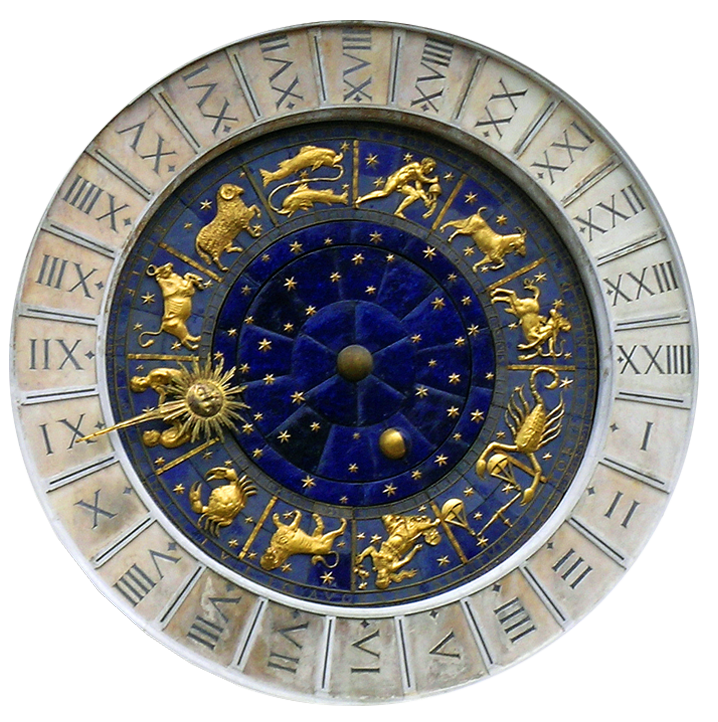
Venice
1499.
|
|
|
The shorter
subtractive notation enabled better spacing on clock dials and facilitated the
inclusion of half-hour markers, making it easier to read the time more
accurately.
However, only the subtractive
IX
was universally applied on standard 12-hour dials, while the subtractive
IV
was not.
|
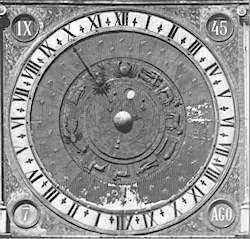 |
Like
the earliest 24-hour public clock dials, early 12-hour dials
employed the ancient additive system as well.
However, the lengthy
VIIII usually gave way to
the compact
IX, thus avoiding
crowding with
VIII and
some visual imbalance with the opposing
III.
Other imbalances, such as
VII–V, IIII–II, VIII–X,
proved
unavoidable2.
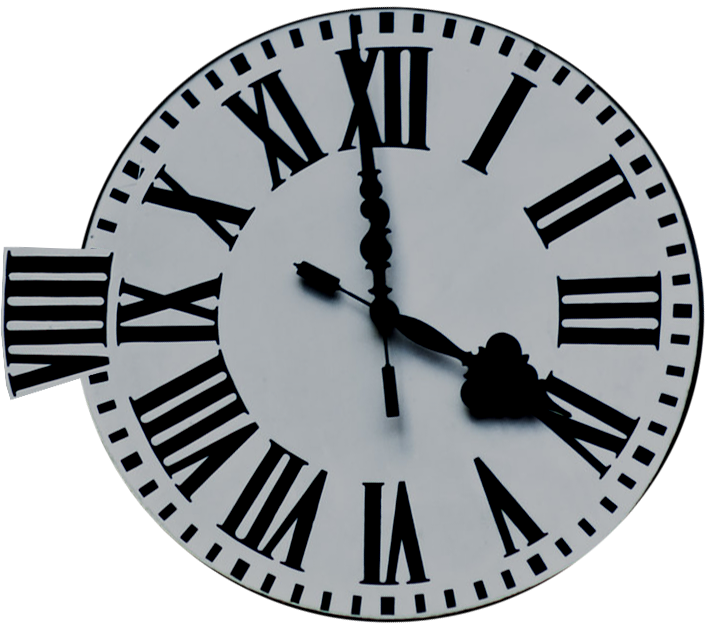 |
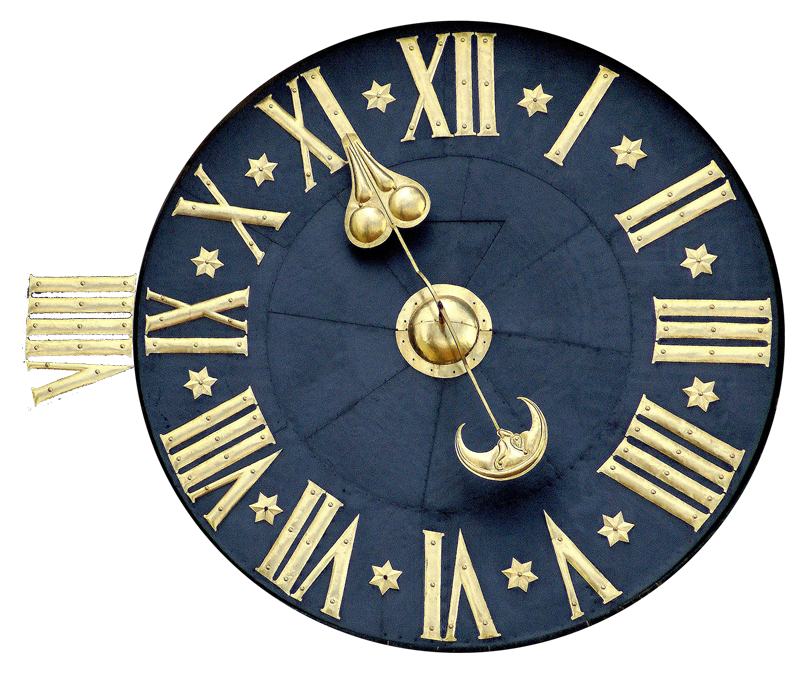
Custom images for comparison
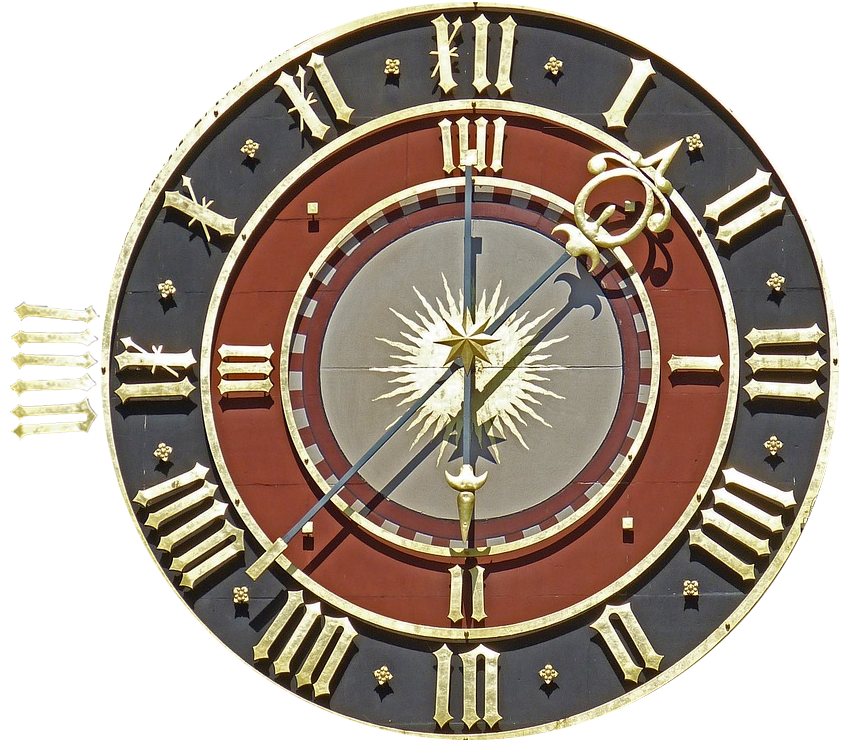 |
A rare instance of the ancient
additive numeral VIIII -rather unusual
on a
12 hour dial- appears
on
the south-west
face of a tower in
Udine, c.1527.
By contrast, the south-east
face bears a later dial, driven
by the same
movement,
employing the compact
subtractive
IX.
|


Torre dell’Orologio, La loggia di
San
Giovanni, Piazza della Libertà,
Udine.
|
The same building - La Loggia di San Giovanni - also featured a
meridian noon sundial used to set the tower
clock to 12:00 local time.
|
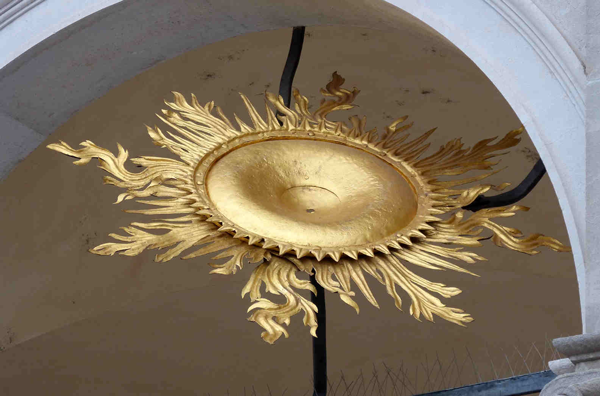
Here is more
on solar time
|
The ESTABLISHED ancient
IIII

|
|
|
|
Employment of the
standard ancient numeral IIII
became further entrenched through its practical application on quarter chapter-rings1
of early public and domestic, often quarter-striking, clocks. On such chapters, the
sequence I–II–III–IIII
correctly reflects the strokes on the quarter-bell, whereas
I–II–III–IV
does not.
Click here
for more about chapters1.
From the 15th century onwards, public
quarter-striking clocks became increasingly common and offered a
24-hour
audible
timekeeping service5 for both outdoor and indoor use.
The hours and quarter-hours were marked by distinct chimes, making them
easy to distinguish. |
4-hour prayer clock dials
|
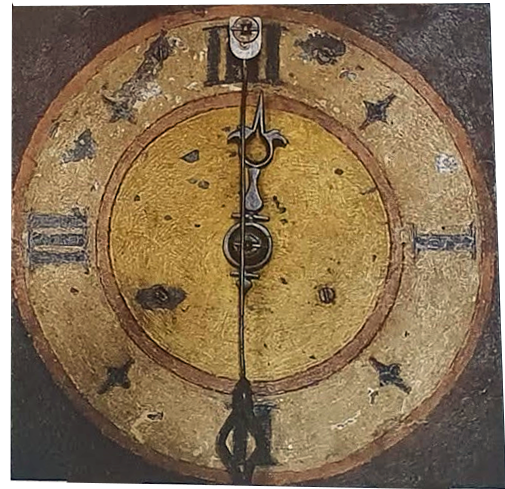 |
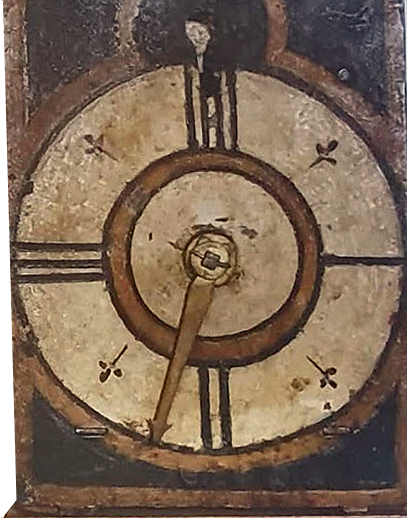 |
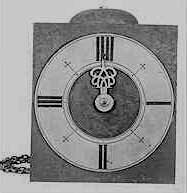 |
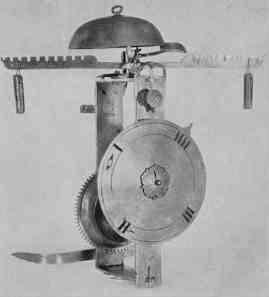 |
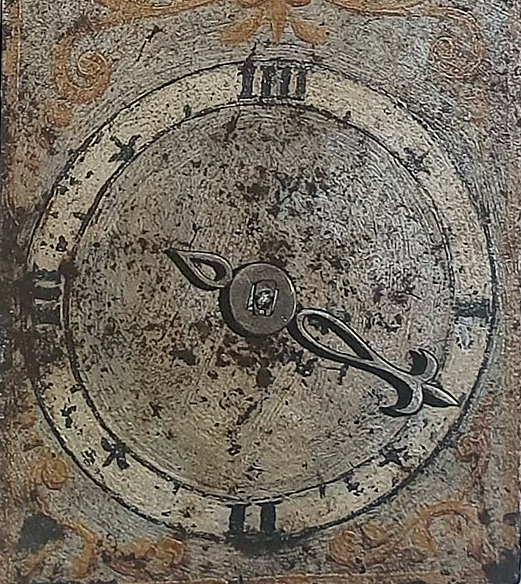 |
|
|
It was only with
the advent of precision pendulum clocks in 1657
that central minute hands, pointing to Arabic minute divisions on the chapter-ring1, acquired real
significance.
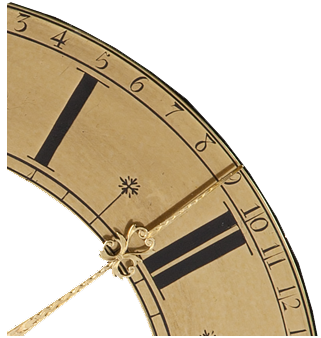 |
|
In comparison with the ancient additive 'IIII', the subtractive 'IV'
was not widely used.
Athough, it does appear on quite a number of dials and its use
increased somewhat
throughout the 20th century.
|
|
Subtractive
IV on the dial
of a public clock in
Tunbridge Wells, c.1760.
|
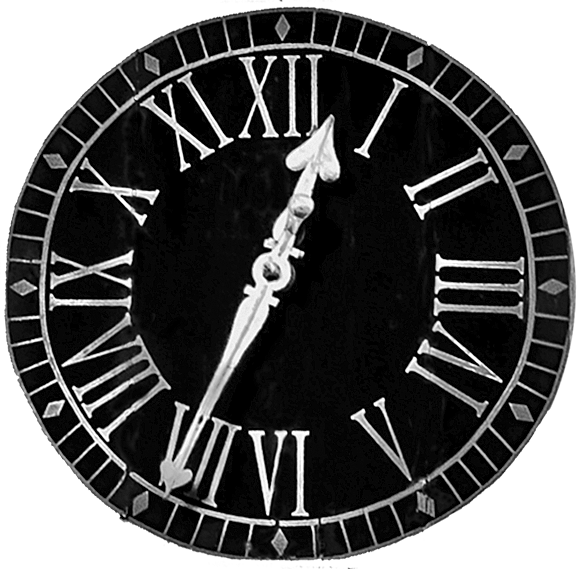 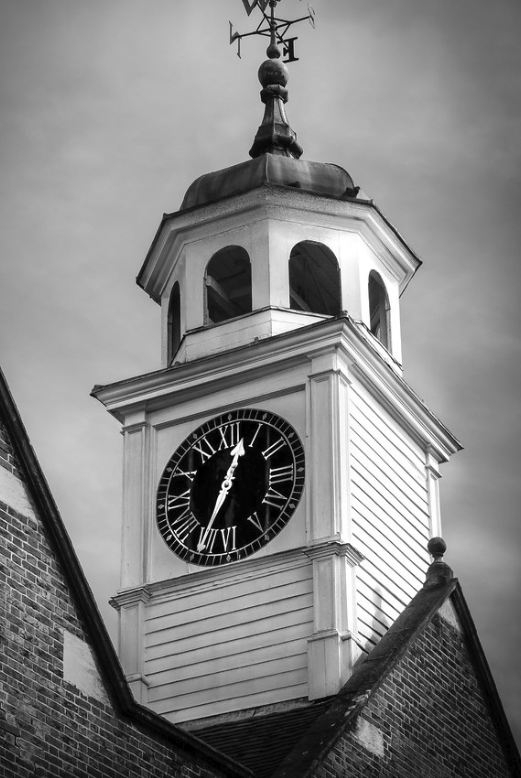 |
|
Subtractive
IV on the dial
of a public clock in
San Sebastián, c.1740.
|
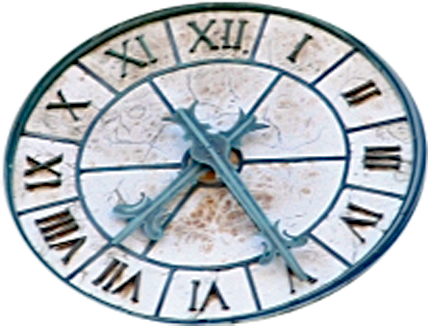
Paul Lewis |
|
Clock
dial with
subtractive
IV,
20th c.
Palazzo del Sedile Matera. |
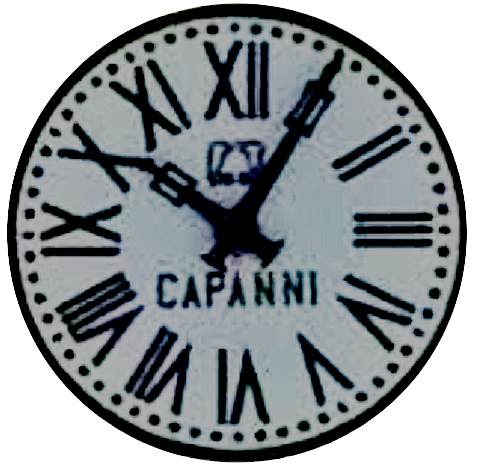
|
|
Sundial with
subtractive
IV,
a.d. 1509
Sundials divided daylight in two roughly 6 hour sections at either side
of the 'noon centerline'
|
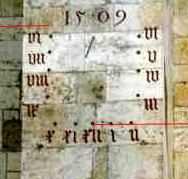
|
|
A
subtractive
IV on the dial
of a public clock in
Prague, 19th c.
|
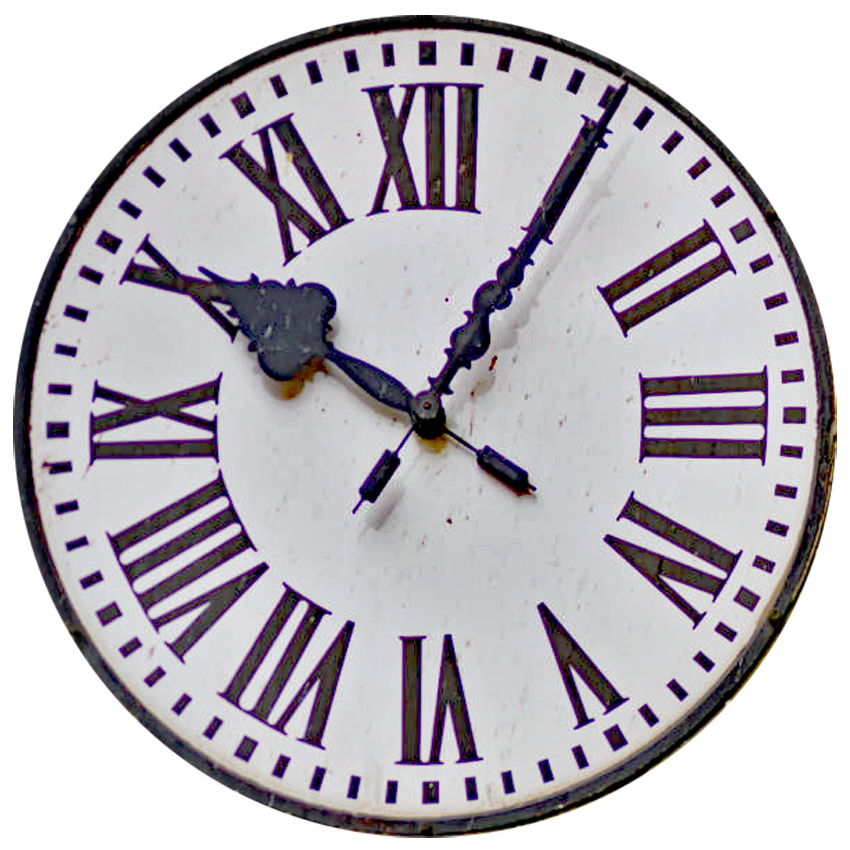 |
|
Despite
the dial’s narrow numeral cartouches, the compact
subtractive IV proves an excellent fit,
while the additive VIII had to be reduced in
size.
|
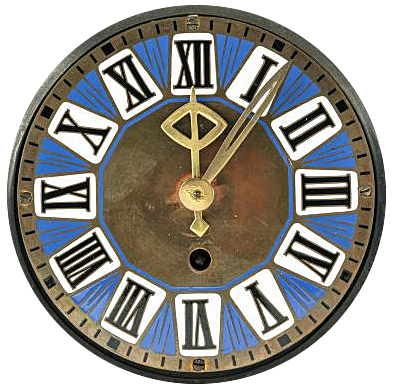
Quittenbaum |
|
A
subtractive IV
employed in 1929. |
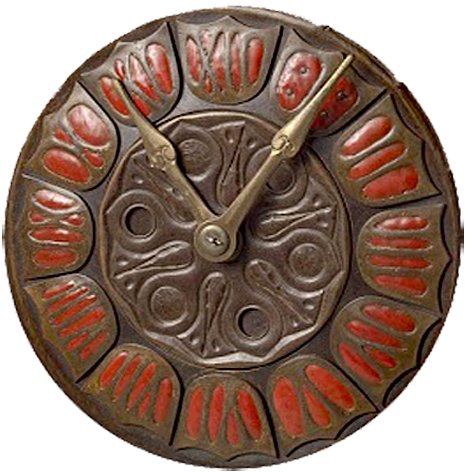
Rijksmuseun |
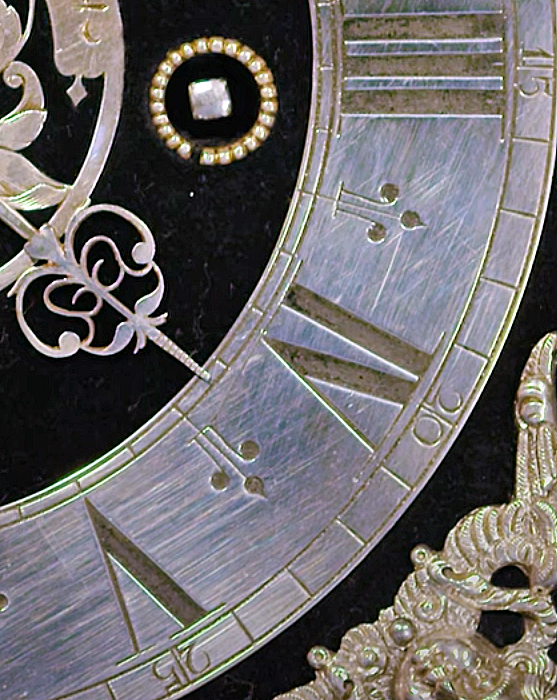
Carter Marsh |
The IV was also found on exclusive,
late 17th c, clocks with a
month going movement and Roman striking, an
energy efficient system in which the number of chimes corresponded to the Roman
numeral itself.
‘I’
= one stroke on a high bell,
‘V’ = one
stroke on a low bell,
‘X’ = two strokes on
a low bell.
At twelve o’clock the train strikes four times (V-V-I-I =
XII); at four o’clock, twice (I-V).
The system requires only
60 strokes in 24 hours, against
156 on a conventional striking train. A
considerable saving of energy, particularly for spring driven long-duration clocks. |
ROMAN NUMERALS
ON DIALS
THROUGH THE AGES

|
|
An astronomical
public clock dial, Padua c.1344 (1437).
24-hour dials highlight that, unlike sundials, mechanical clocks are capable
of keeping time around the clock, both day and night. |
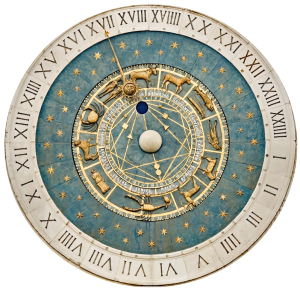 |
|
A
public astronomical
clock dial, Rouen c. 1389. |
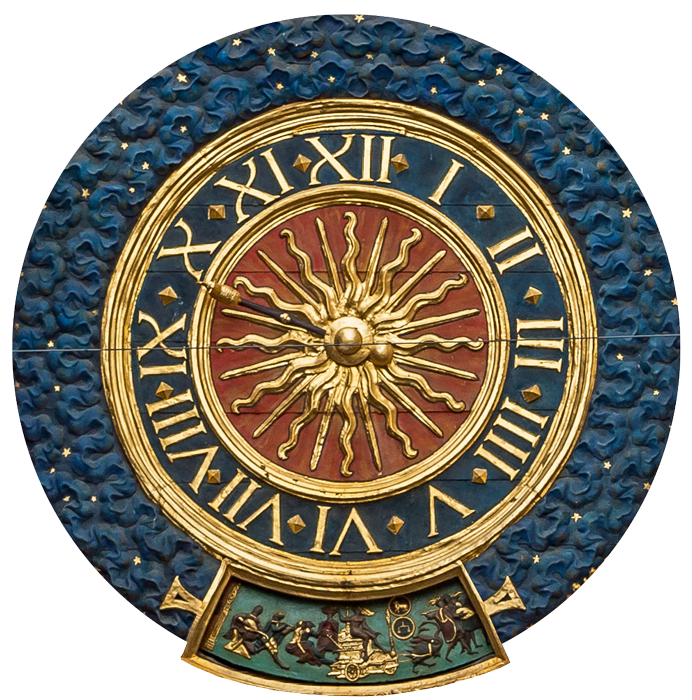
Rue du Gros Horloge |
|
An English turret clock dial
c. 1390. |
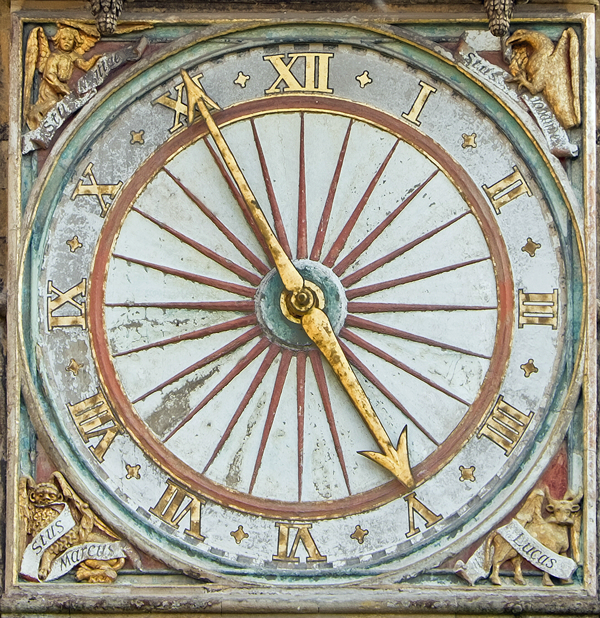
Wells Cathedral |
|
|
|
|
An
Italian public clock dial, featuring radially applied numerals configured to
accommodate the extended numeral XXIIII,
San Giacomo di Rialto,
Venice, c. 1410. |
 |
|
Another Italian public clock
dial with counter wise rotating hour hand, Florence c. 1450
|

The Duomo |
|
|
|
|
An astronomical public
clock in Brescia c.1540.
|
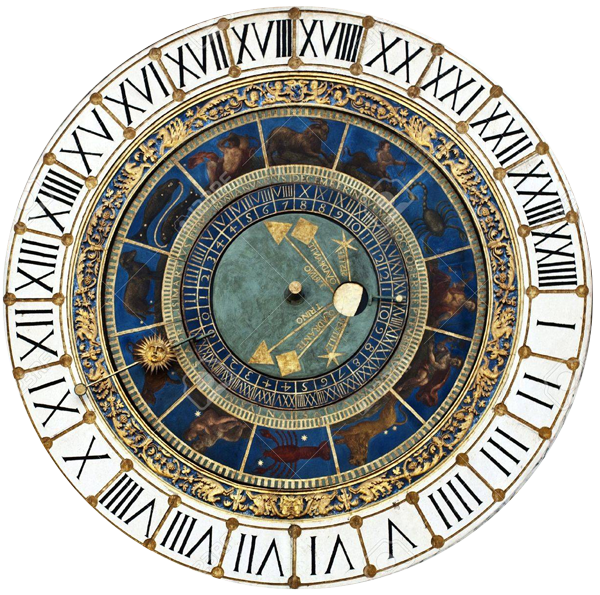 |
|
A German table clock dial
c.1560. |
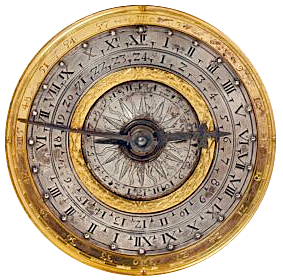 |
|
Quarter
striking public clock dial, frescoed directly onto the wall of the Uhrturm in Graz, c.1569. |
 |
|
A
quarter chapter1
on the subsidiary dial of
a late 16th c. German
astronomical table clock. |
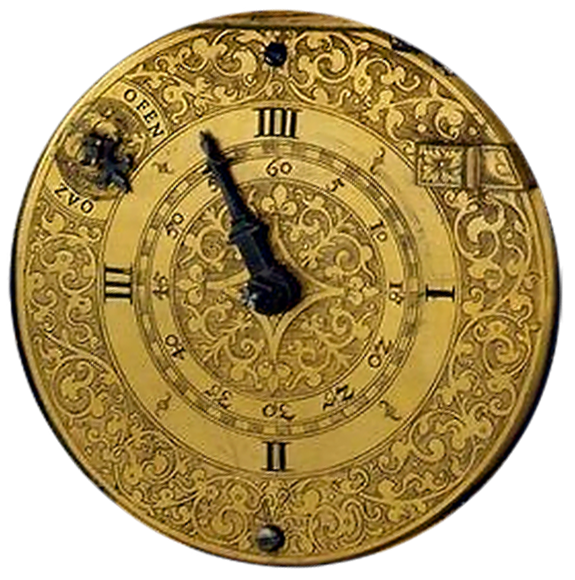 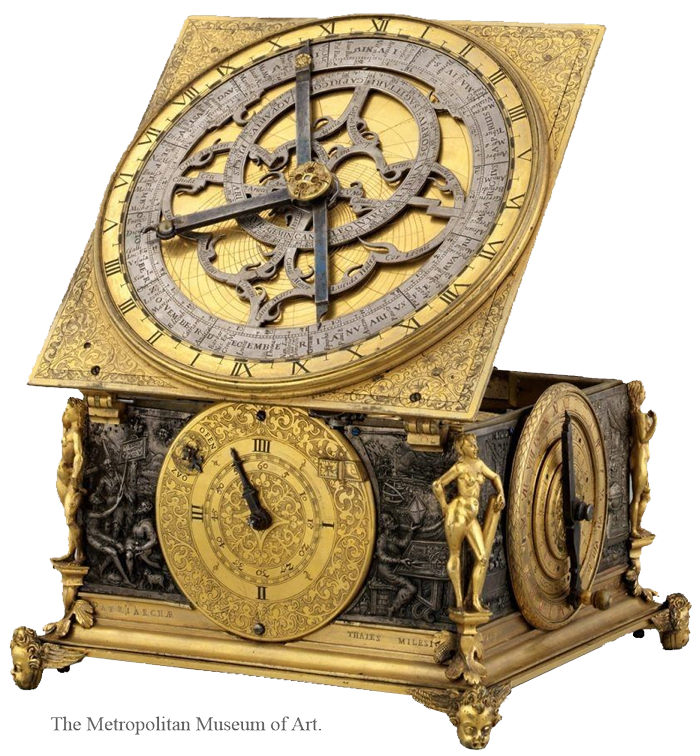
The MET |
|
The dial of
an 'Italian time'3 lantern clock c.1580, striking four 6-hour
cycles per day. Its vertical center line accentuates the two 6-hour halves of the chapter1.
The radial applied numerals allow space for the full additive VIIII.
Who cares about visual imbalances? |
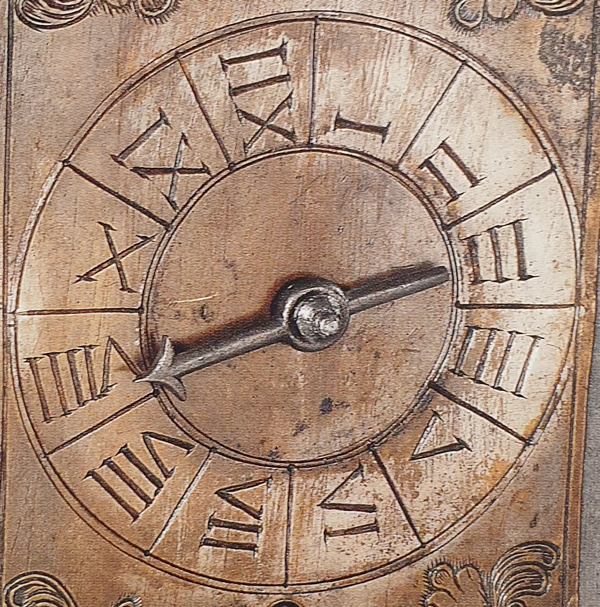
La Misura del Tempo |
|
A silvered subsidiary dial with quarter
chapter on a French Renaissance table clock c. 1589. |
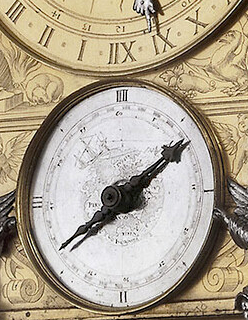
British museum |
|
|
|
|
Another 'Italian
time'3 lantern clock dial
c. 1600. Displaying 'sunset hours' within the first quarter of the
chapter1. |
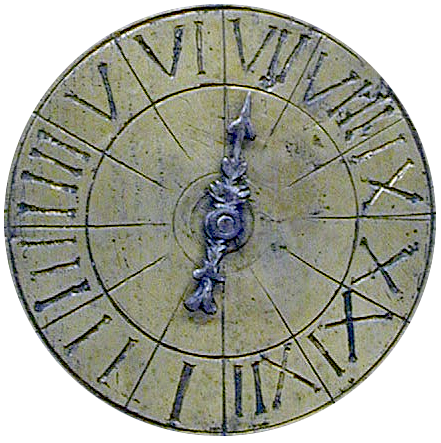
J.Venema |
|
An
English lantern clock dial c.1623. |

Bonhams |
|
The
chapter ring1
of Christiaan Huygens' first pendulum clock,
1657, marking not just minutes, but a
turning point in horological history—the
dawn of precise timekeeping. |
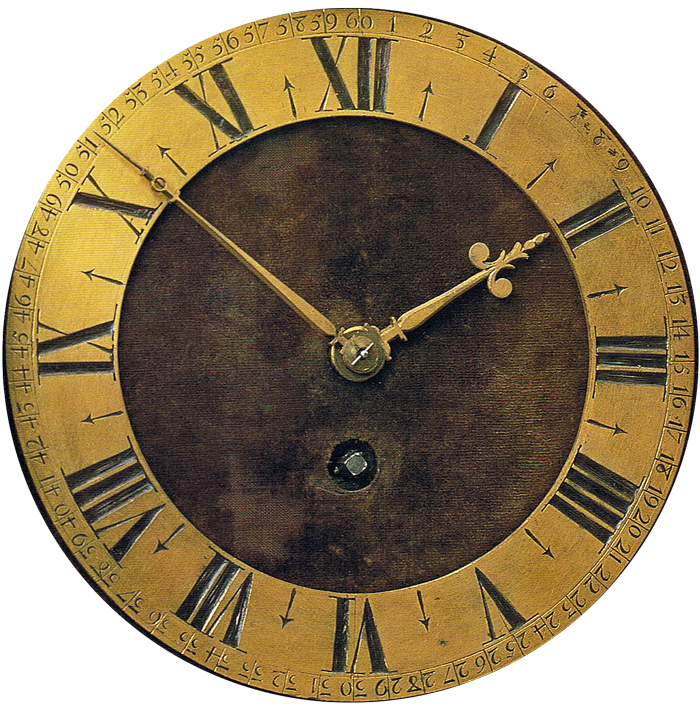
Museum Boerhaave |
|
It’s a quarter to
eight on this backlit Italian night clock dial from the late 17th century, with 'wandering hours' moving
across an ajour arc-shaped
quarter chapter1. |
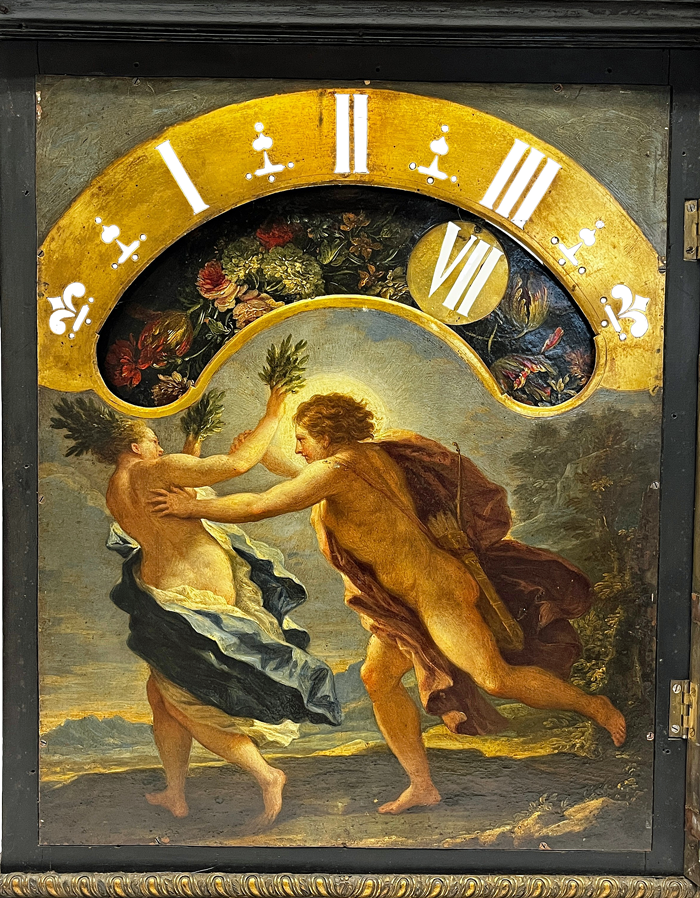
Easy live Auction |
|
The
dial of an English
longcase clock
c.1678, with calendrical, lunar, and tidal indications. |

THe MET |
|
The
dial of an English
longcase clock with Roman-striking
c.1680, hence the silvered chapter ring1
with subtractive IV.
|
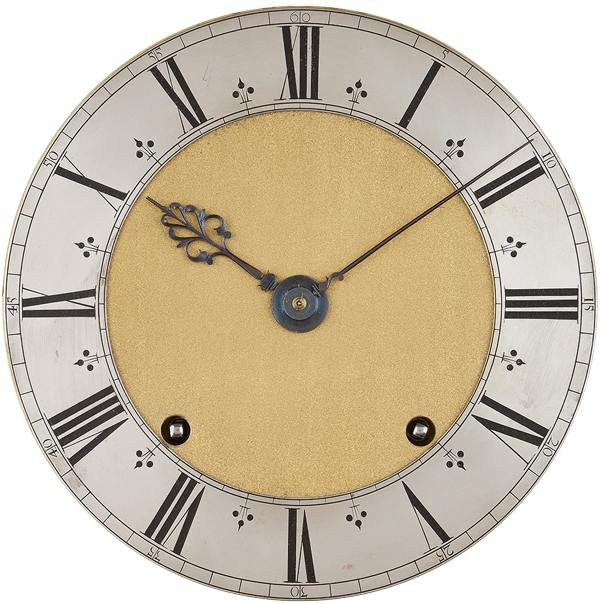
Carter Marsh |
|
An
English lantern
clock dial c. 1690, featuring a small alarm time setting disk, the
single hand pointing to quarter divisions on the chapter ring1.
The making of single-handed domestic
clocks persisted until the early 19th century. |
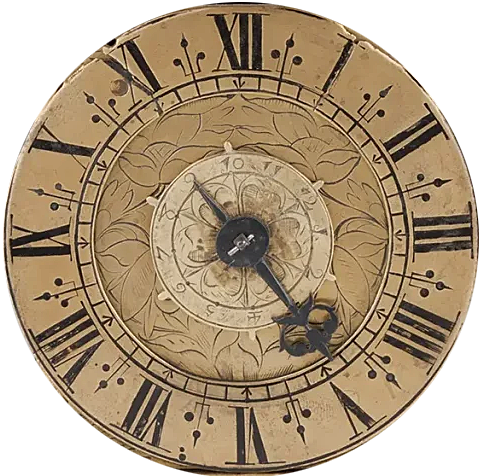
Carter Marsh |
|
|
|
|
A
6-hour
'Italian time'3
lantern clock dial, with later 12-hour extension, early 18th c. |
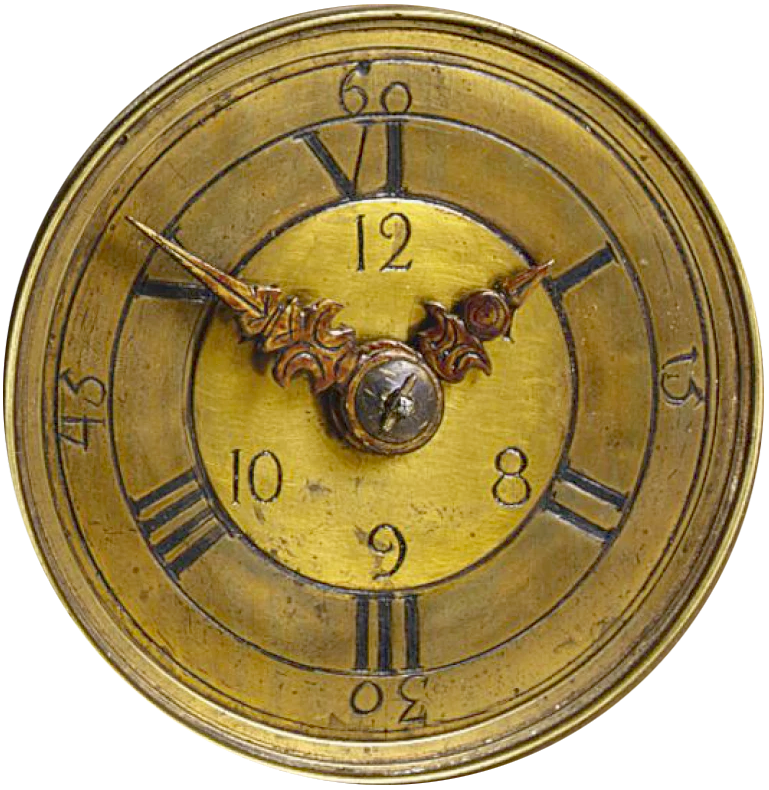
Sotheby's |
|
A dial with 12 enamel cartouches (cadran á douze) early 18th c. |
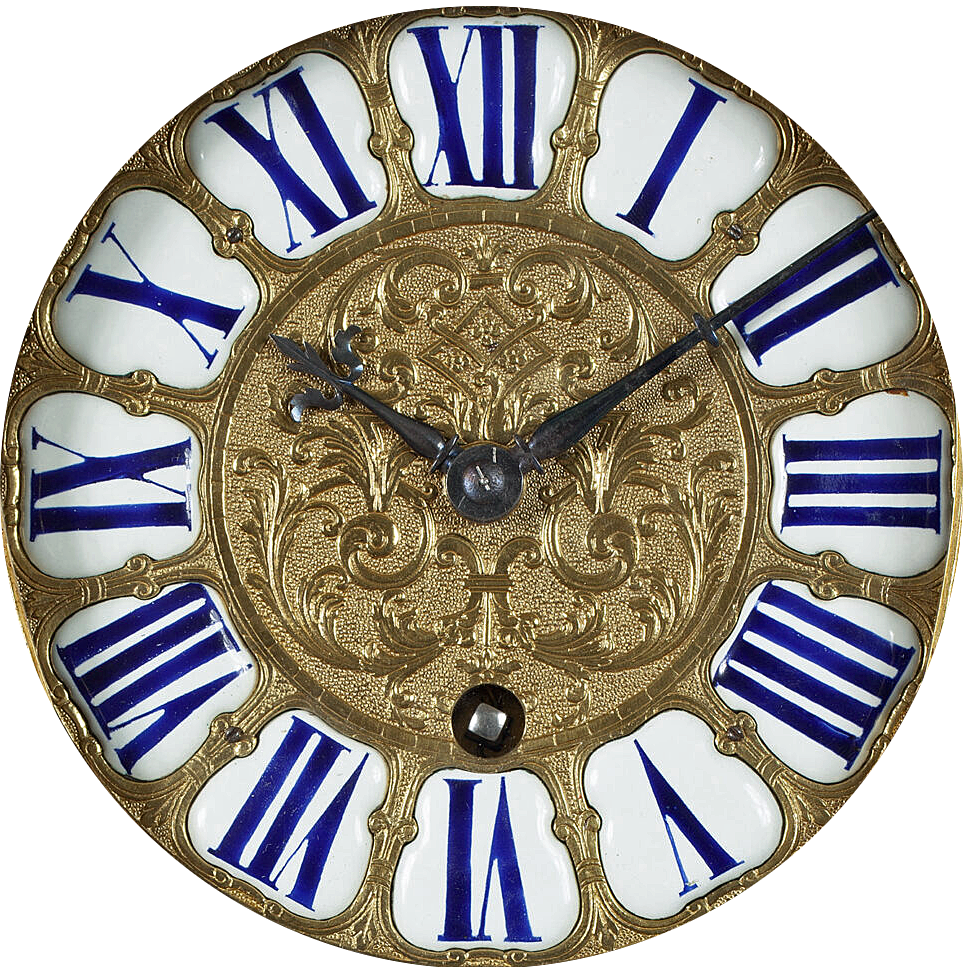
Mentink & Roest |
|
A mid 18th c. Louis XV French
mantel clock dial. |
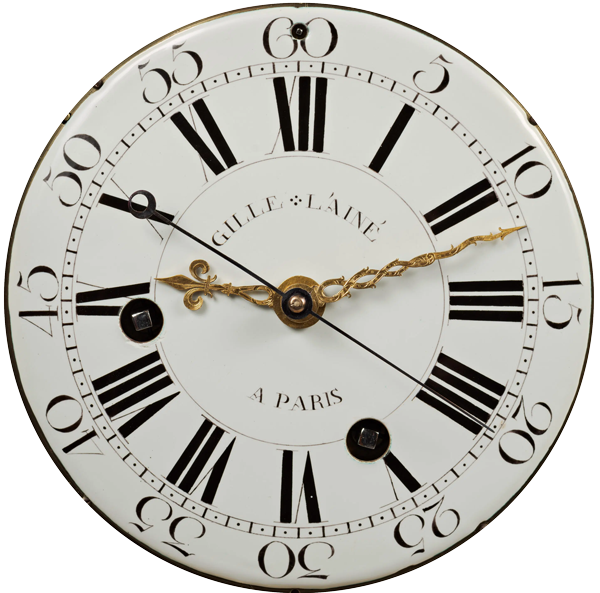
La Pendulerie |
|
A mid-18th-century Italian lantern clock dial
featuring a quarter chapter1.
Quarter chapters had become
increasingly uncommon over the course of the 18th century. |
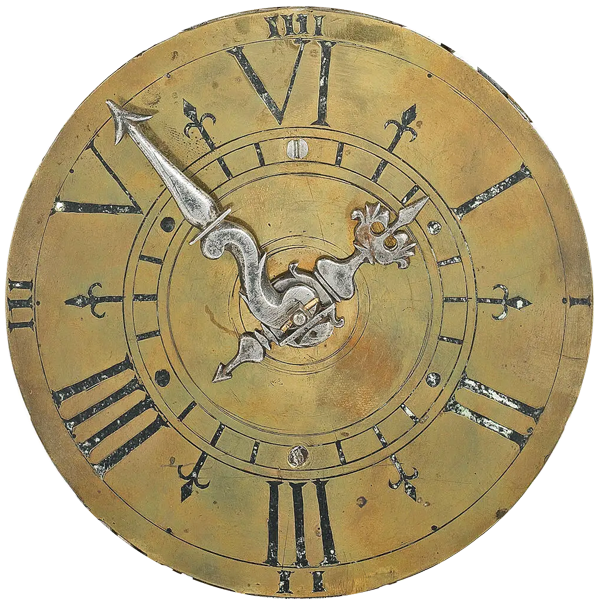
Bonhams |
|
The painted dial
of a Dutch wall clock,
c. 1760. |
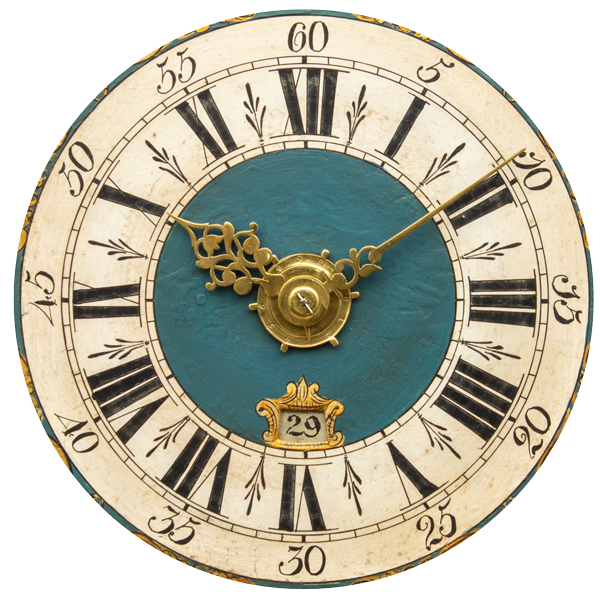
Gude Meis |
|
A
quarter striking Italian longcase clock with 'wandering'
(rotating)
12 hour chapter1, c. 1770. |

La Misura del Tempo |
|
The
lavishly decorated dial of a French table regulator clock
c.1780, featuring
equation of time, annual calendar, and signs of the zodiac.
|

La Pendulerie. |
|
An
English 24 hour tidal longcase clock dial with both additive and subtractive
numerals
4, c.1780. |

The Antique Clock co. |
|
A
late 18th-century French mantel clock with a dial of refined decoration, also
marking the days of the month. |
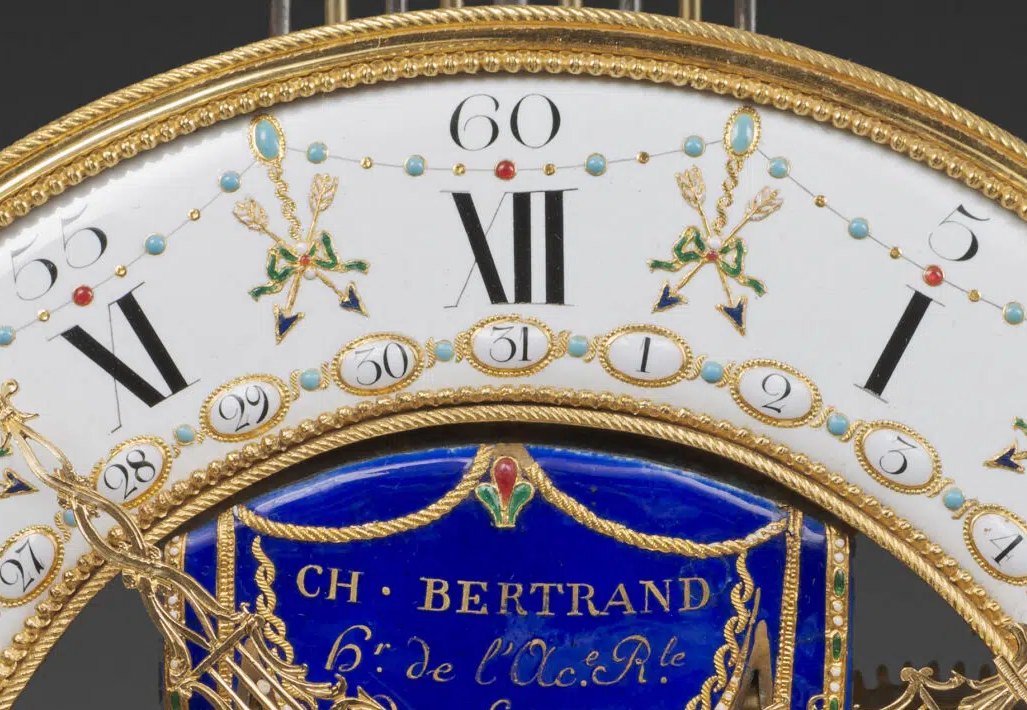
La Pendulerie |
|
The horizontal rotating dial (cercle
tournant) of a late 18th-century French vase
clock. |
 
Van Dreven Antique Clocks |
|
A French mantel
clock dial c.1795, displaying the newly introduced revolutionary Decimal Time4
on the inner chapter while the outer chapter retains conventional Gregorian
hours. |
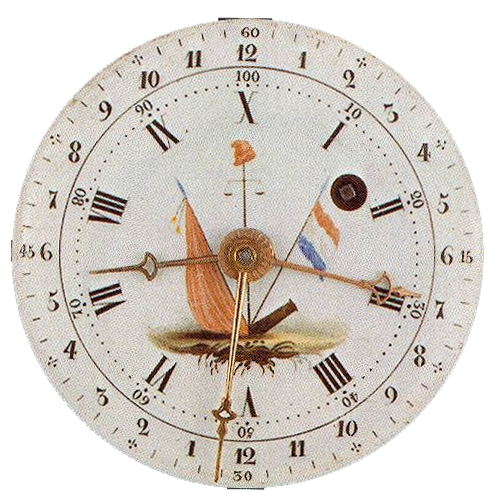
Les Heures Revolutionnaires |
|
|
|
|
A
clean Empire wall clock dial, c.1810 . |

Gude Meis |
|
The silvered dial of a Vienna regulator
wall clock, c.1830. |
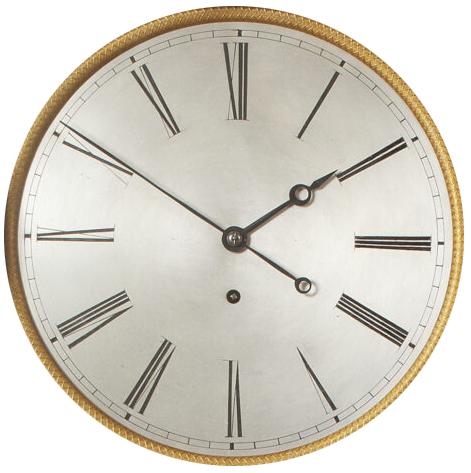
Mentink & Roest |
|
The
Gothic revival dial of the Westminster tower clock with subtractive
IV, c.1859 |
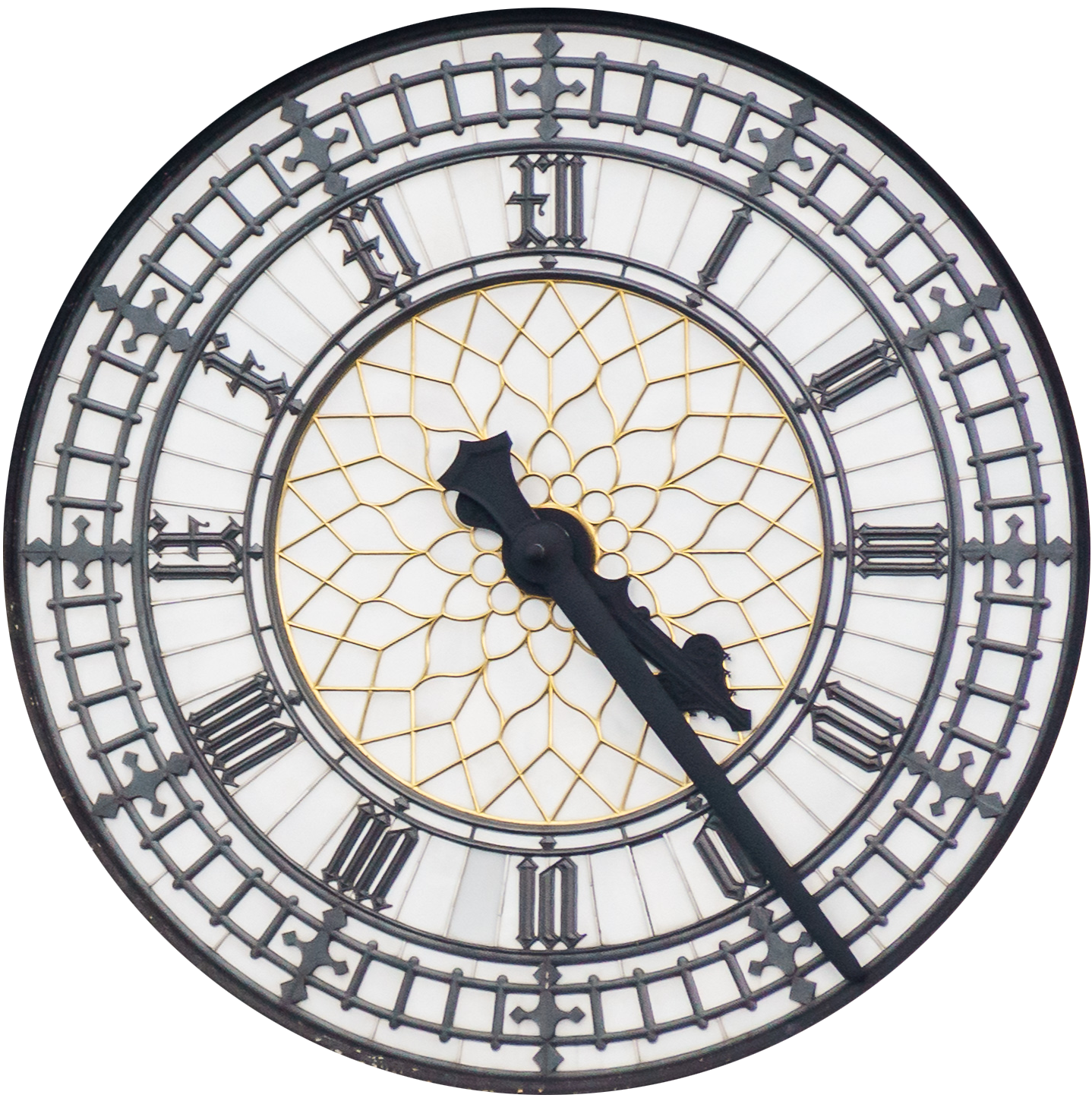 |
|
A Neo Gothic English skeleton clock dial, c.1870 |
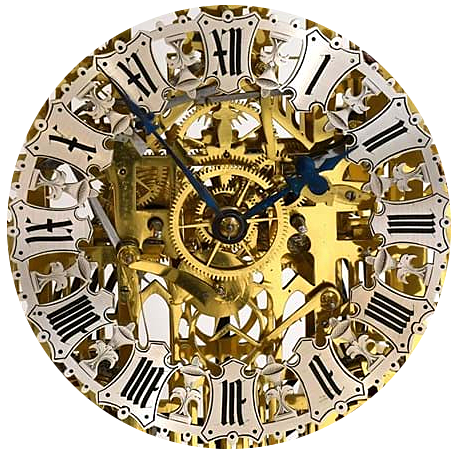 |
|
A US Ansonia
wall clock dial.
New York, c. 1895 |
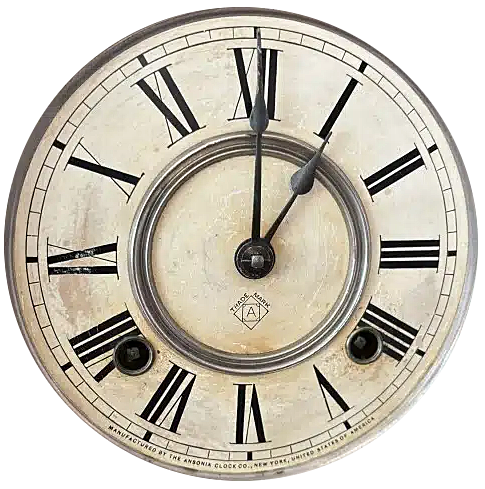 |
|
|
|
|
A German Jugendstil mantel clock dial with subtractive
IV, c. 1903 |

Quittenbaum |
|
An Art Deco
desk
clock dial, c. 1920 |
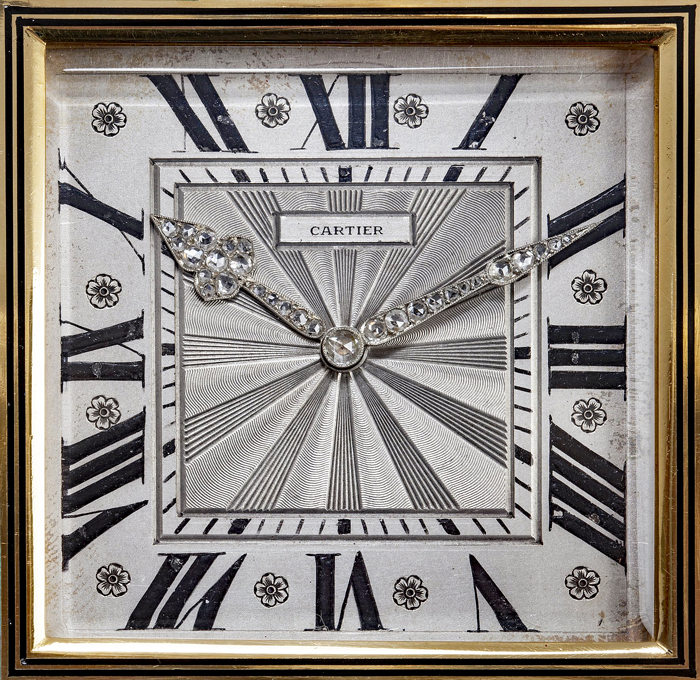
Marjan Sterk |
|
An Art Deco
mantel
clock dial, c. 1925 |
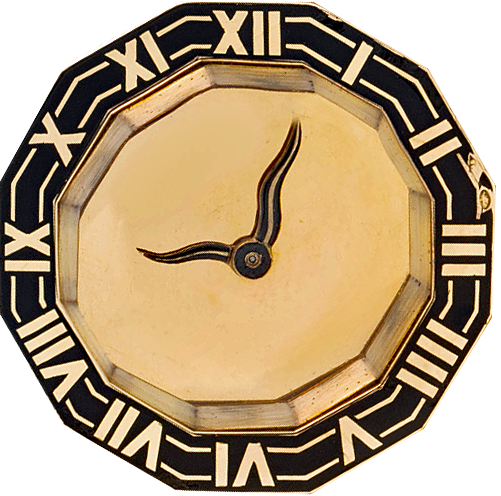
Christie's |
|
A
Cartier carriage clock face, 'Cadran Breveté'
c. 1928 |
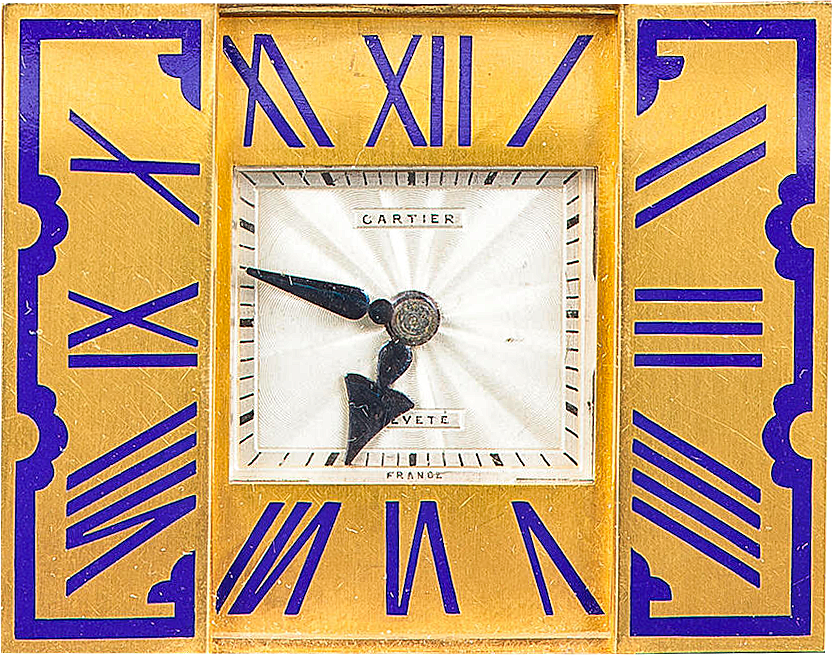
Bonhams |
|
An Art Deco
desk
clock dial, c. 1929 |
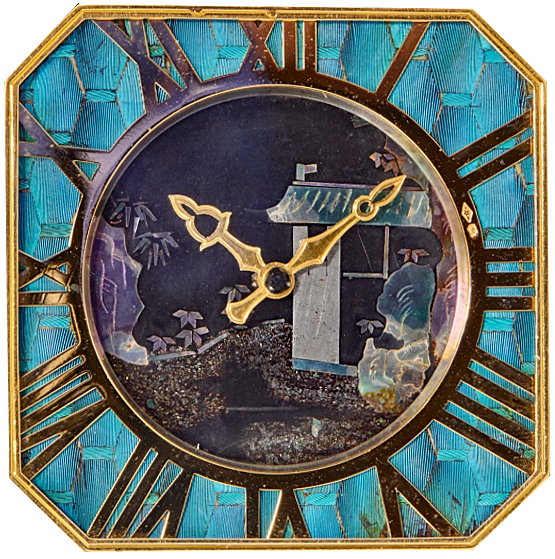
Christie's |
|
An
Art Nouveau mantel clock dial, G.
H. Lantman c.1929. |

Rijksmuseum |
|
An Art Deco
desk
clock dial, c. 1929 |
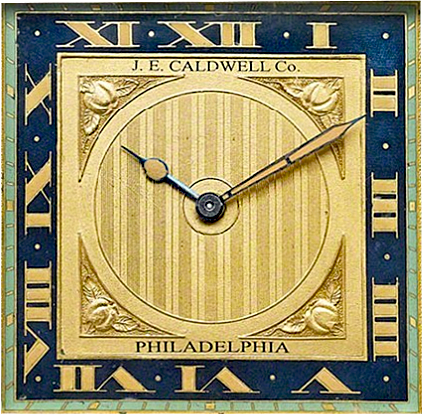
Ms Rau |
|
An Art Deco
mantel
clock dial, c. 1930 |
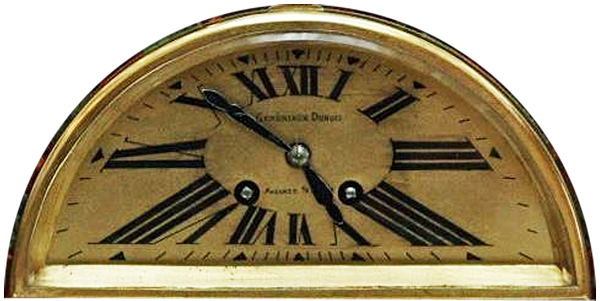
|
|
A
J. L. Reutter Art Deco Atmos clock dial, c. 1935 |
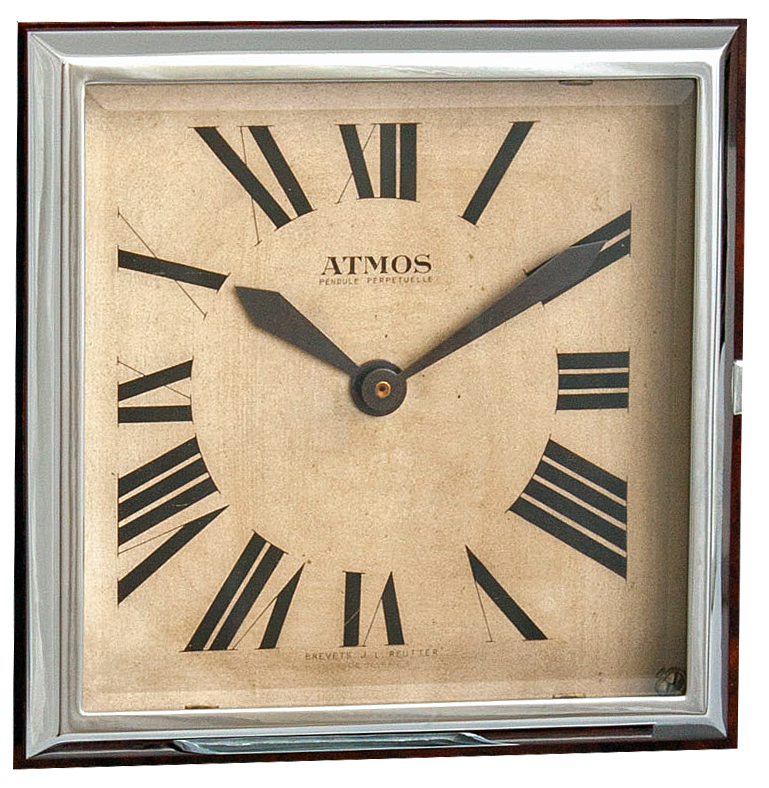
Gude Meis |
|
|
Arabic
numerals and non-numerical
indices became
commonplace over the course
of the 20th century,
gradually replacing Roman numerals,
though not entirely.
|

Jeager le Coultre |
|
|
 

|
|
Notes
1
Chapters.
In a horological context, a chapter is the scale of divisions and
markings -such as numbers or signs- used to read the time and related
indications on a dial. These markings may be engraved, painted, printed or
otherwise applied, either directly onto the dial or on attached elements like
'cartouches' or a 'chapter ring'.
2
Imbalances.
Correcting the IIII–II
imbalance would in turn create a new, albeit relatively minor, IV–VIII
imbalance.
3
Italian 6-hour time.
The temporal system emerged in the Middle Ages in the
Papal States, rooted in monastic timekeeping and canonical hours. The day began
at the advent of the evening, about half an hour after sunset, and was divided into
four six-hour*
segments.
By the late 18th and early 19th centuries, as standardization and
modernization increased, the Italian six-hour system fell out of use in
practical timekeeping.
* Sundials already measured the sun’s course in
two roughly six-hour
spans -one before and one after the noon reference line (mid-day).
4 French
Revolutionary Decimal Time.
A short-lived system introduced during the French
Revolution (1793–1805) as part of a broader attempt to decimalize all aspects of
daily life (calendar, measurements, currency, etc.).
Each day was divided in
10 hours of 100 minutes.
Here is more on decimal time.
5
It can reasonably be assumed that the earliest late 13th c. monastic mechanical
clocks indicated time by striking chimes rather than visually by means of dials.
This article is subject to ongoing updates.
|
More on this subject
https://en.wikipedia.org/wiki/Roman_numerals
Paul Lewis:
....."Clearly there is
much less power here in the symmetrical balance argument, the dial is not
symmetrical anyway. The Arabic numerals do not balance and the two or three
stars in each sector of the clock-face are certainly not arranged to match those
in the sector opposite"......
http://www.web40571.clarahost.co.uk/roman/clockface.htm
Acknowledgments
Illustrations:
Bonhams. British museum. Carter Marsh. Gude Meis. Guiseppe Brusa, La
misura del tempo. Joachim Köhler. Koller
auctioneers. La Pendulerie.
Yves Droz et Joseph Flores, Les Heures Revolutionnaires. Marjan Sterk. Mentink & Roest.
TheMET. Museum Boerhaave. Quittenbaum Kunstauktionen.
Rijksmuseum. San Domenico Bologna.
Sotheby's.
Van Dreven. Wells Cathedral.
The Horological Foundation gratefully acknowledges
Jo Dickenson-Schepp
for her highly esteemed contributions.
Links
Bonhams
British museum
Carter Marsh
van Dreven
GudeMeis
Koller auctioneers
Guiseppe Brusa La misura del tempo
La Pendulerie
Mentink
& Roest
Museum Boerhaave
Quittenbaum Kunstauktionen
Rijksmuseum
The MET
|
















